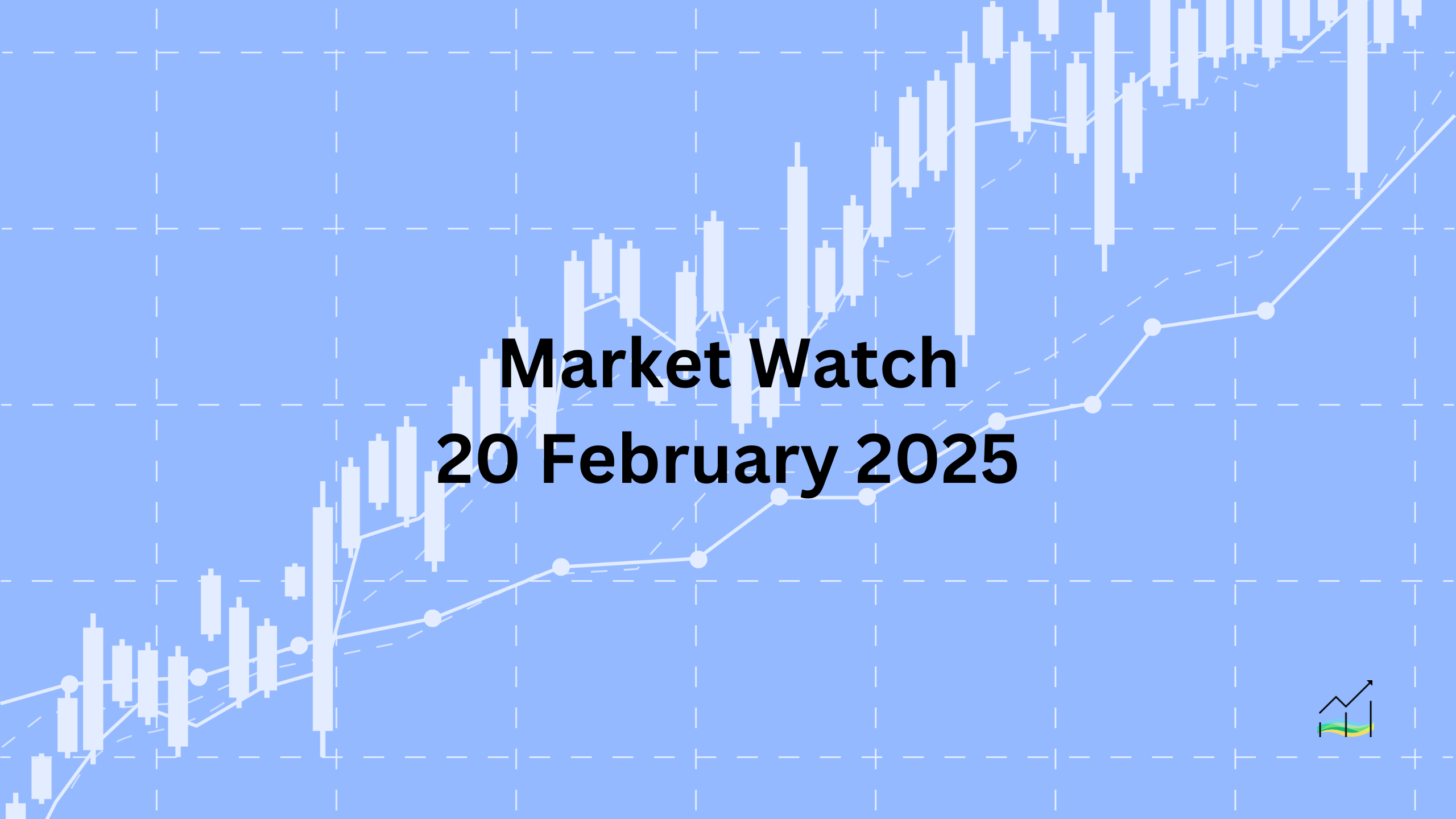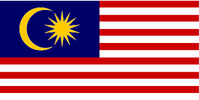20/02/2025 Market Watch

Dollar Retreats as Yen Strengthens, Markets Adjust
The dollar’s gains from North America’s session have reversed, with the greenback weakening against all G10 currencies. The Japanese yen leads the advance, pushing the dollar below JPY150 for the first time in over two months. This move is attributed to growing expectations that the Bank of Japan will continue raising rates, though swap markets show only minor changes. The dollar may not have found a bottom against the yen yet. Most emerging market currencies are also strengthening, with the Mexican peso rebounding after its first decline in seven sessions.
In equities, rising Japanese government bond (JGB) yields and a stronger yen weighed on Japanese stocks, pushing major indices down over 1%. Similar declines were seen in Australia’s ASX 200 and mainland Chinese stocks trading in Hong Kong. In contrast, Europe’s Stoxx 600 is up 0.25% after a sharp 0.9% drop yesterday. US stock futures are softer, while European bond yields are mostly lower, except for the 10-year Gilt yield, which edged up to 4.62%. The 10-year US Treasury yield is slightly lower at 4.52%.
On the commodities front, gold reached a new record near $2,955, while April WTI crude oil remains stable around $72, near its 20-day moving average. The US Treasury is set to auction $165 billion in bills and $9 billion in 30-year TIPS today, alongside more Federal Reserve commentary reinforcing a patient approach to monetary policy.
United States of America
Overview
The Dollar Index softened after reaching a four-day high near 107.40. A sustained move beyond 107.50 would strengthen the technical outlook and suggest that the recent decline from nearly 110.20 has ended. However, this decline follows a 10% rally since late September, making the broader trend significant. Momentum indicators remain stretched but have yet to turn higher. Initial support lies near 106.80, with Monday’s low of 106.60 marking a two-month low.
Economic Drivers
The labor market remains in focus as concerns grow over a potential acceleration in job losses. While the impact of federal government layoffs on unemployment claims may take time to materialize, risks to labor market stability are increasing. The Leading Economic Index (LEI) was unchanged in Q4 2024—the first time it did not decline since 2021. However, Q1 2025 may not be as stable.
Data and Events
Key economic releases today include the Philadelphia Fed survey, weekly jobless claims, and the LEI. These indicators will provide further insight into economic conditions. Additionally, four Federal Reserve officials are scheduled to speak, though their stance remains clear—the Fed is expected to hold rates steady through the first half of the year. Market pricing suggests the first rate cut in September, with a 40% chance of an additional cut before year-end, though risks lean toward a higher likelihood.
Price Action
The Dollar Index faces resistance at 107.50, with support levels at 106.80 and 106.60. Despite stretched momentum indicators, a strong push above resistance could shift market sentiment in favor of further gains.
Key Points:
- Dollar Index softened after hitting 107.40, with 107.50 as key resistance.
- Labor market risks rising, with government layoffs potentially impacting unemployment claims in the coming weeks.
- LEI was flat in Q4 2024, the first stable quarter since 2021, but Q1 2025 may be weaker.
- Fed speakers today, though rate cuts remain unlikely before September.
- Market pricing suggests at least one rate cut in 2025, with a 40% chance of a second.
Australia
Overview
The Australian dollar briefly approached its two-month high near $0.6375 on Monday before pulling back. Yesterday, it dropped to a new weekly low just below $0.6330 but has since rebounded, trading above yesterday’s high. The recovery was supported by a strong employment report, despite a slight uptick in the unemployment rate.
Economic Drivers
Australia’s labor market remains resilient, with job growth surpassing expectations. While the unemployment rate rose to 4.1% in January—matching its level from a year ago—the underlying job creation data was solid. The economy added 44,000 jobs, double the forecasted figure, signaling strength in employment trends.
Data and Events
The details of the report revealed a shift in employment composition. Full-time jobs increased by 54,000 after a 24,000 loss in December, while part-time positions declined by 10,000 following a sharp 84,000 gain the previous month. The participation rate also edged higher to 67.3% from a revised 67.2%. Australia has averaged job growth of 37,000 per month in 2024, compared to 31,000 per month in 2023. Notably, full-time employment accounted for almost 25,000 monthly job gains last year, a significant increase from the 9,000 average in 2023.
Price Action
The Australian dollar’s rebound suggests ongoing demand, with price action now exceeding yesterday’s high. If momentum continues, a retest of $0.6375 remains possible. However, support near $0.6330 will be closely watched.
Key Points:
- AUD recovered after dipping to a weekly low below $0.6330.
- Australia added 44k jobs, twice the expected amount, despite unemployment rising to 4.1%.
- Full-time jobs surged by 54k, while part-time employment fell by 10k.
- Participation rate increased to 67.3%.
- Job growth trend remains strong, averaging 37k per month in 2024.
- AUD momentum improving, with resistance at $0.6375 and support at $0.6330.
Canada
Overview
The US dollar has edged higher against the Canadian dollar for three consecutive sessions, though the gains have been modest. After touching a two-month low near CAD1.4150 at the end of last week, the greenback reached a four-day high yesterday above CAD1.4245, aligning with the 38.2% retracement of last week’s decline. Today, the pair is finding support slightly above CAD1.4200.
Economic Drivers
A key factor influencing the Canadian dollar is the narrowing US-Canada interest rate differential. The US two-year yield premium over Canada has tightened for seven straight sessions, now standing around 145 basis points—the smallest spread since late January. This compares to the recent high of 165 basis points earlier this month, the widest since 1997. On the longer end, the US 10-year yield premium, which peaked at a record 150 basis points on February 4, has now narrowed to around 135 basis points.
Data and Events
Options worth approximately $715 million at CAD1.4175 are set to expire today, which could influence short-term price movements. Broader market focus remains on interest rate dynamics and yield spreads between the US and Canada.
Price Action
USD/CAD remains in a consolidation phase, with minor gains over recent sessions. The pair is holding above CAD1.4200 after testing resistance near CAD1.4245. A break above this level could open the door to further gains, while key support remains near CAD1.4150.
Key Points:
- USD/CAD gained for three sessions, but the moves have been minor.
- The pair hit a two-month low at CAD1.4150 last week before recovering.
- Resistance near CAD1.4245, aligning with a key Fibonacci retracement level.
- US-Canada yield spreads have narrowed, supporting the Canadian dollar.
- US two-year yield premium has tightened to 145 bp from 165 bp earlier this month.
- US 10-year yield premium has declined from a record 150 bp to 135 bp.
- $715 million in options at CAD1.4175 expire today, potentially influencing price action.
China
Overview
The US dollar hit a monthly low on Monday near CNH7.2525 before rebounding to CNH7.2930 yesterday. However, it is trading lower today, nearing CNH7.2600. Despite market expectations for further policy easing, Beijing has been cautious in providing additional support, keeping loan prime rates unchanged.
Economic Drivers
Contrary to speculation that Chinese authorities might allow the yuan to weaken in response to US tariffs, the People's Bank of China (PBOC) has maintained a stable exchange rate. The onshore yuan has appreciated by around 0.50% this year, while the offshore yuan has gained about 1%. Rising Chinese equities and a narrowing 10-year yield differential with the US may also lend support to the yuan.
Data and Events
The PBOC set the dollar’s reference rate at CNY7.1712 today, the highest in a week. This signals continued efforts to manage currency stability. Market participants had anticipated potential rate cuts, but the decision to leave loan prime rates unchanged suggests a measured approach from policymakers.
Price Action
The dollar has been fluctuating within a defined range, with support near CNH7.2525 and resistance around CNH7.2930. While recent gains have been pared back, the overall trend suggests that the yuan remains well-supported despite external pressures.
Key Points:
- USD/CNH hit a monthly low at CNH7.2525 before rebounding to CNH7.2930.
- PBOC kept loan prime rates unchanged, signaling cautious policy support.
- The onshore yuan is up 0.50% YTD, while the offshore yuan has gained about 1%.
- The PBOC set the dollar reference rate at CNY7.1712, the highest in a week.
- Stronger equities and a narrower US-China yield spread may support the yuan.
- USD/CNH remains range-bound, with key support at CNH7.2525 and resistance near CNH7.2930.
Europe
Overview
The euro climbed from $1.0280 on February 10 to nearly $1.0515 on February 14 before pulling back to $1.04 in North American trading yesterday. It is now consolidating in a tight range above $1.0420, with key option expiries at $1.0450 today.
Economic Drivers
Beyond market dynamics, broader geopolitical factors are influencing sentiment. The US is not only imposing tariff threats but also signaling potential bilateral agreements with Russia and China. This stance sidelines Europe, raising concerns over the euro’s standing in global trade and policy. A political risk premium on the euro may start to emerge.
Data and Events
Options worth 1.6 billion euros at $1.0450 are set to expire today, which could impact near-term price action. Any significant geopolitical developments, particularly regarding US-EU trade relations, could also weigh on sentiment.
Price Action
The euro has retraced about 50% of last week’s rally and remains in a narrow consolidation zone. Support is seen at $1.0420, with resistance near $1.0450 and $1.0515. Market participants are closely watching for further directional cues.
Key Points:
- Euro rose from $1.0280 to $1.0515 before retreating to $1.04.
- Currently consolidating above $1.0420, with key option expiries at $1.0450.
- US trade policies and geopolitical shifts could introduce a political risk premium.
- Options worth 1.6 billion euros expire today, influencing near-term movement.
- Support at $1.0420, while resistance remains at $1.0450 and $1.0515.
Japan
Overview
The yen found support as markets interpreted the lack of interest rate policy discussion in today's meeting between BOJ Governor Ueda and Prime Minister Ishiba as a sign that monetary normalization is no longer controversial. This helped the yen, with the dollar briefly dipping below JPY150 for the first time since December 9.
Economic Drivers
A narrowing US-Japan yield differential has supported the yen. The US 10-year yield firmed by five basis points this week, but the 307 bp premium over Japan is the lowest in four months. Additionally, Japan’s Prime Minister Ishiba has requested tariff exemptions from the US, but it remains uncertain whether they will be granted. Japan maintains a trade deficit overall but runs a surplus with the US, which may complicate negotiations.
Data and Events
There was no mention of interest rate policy during the BOJ meeting with Ishiba, reinforcing speculation that Japan is moving forward with monetary policy normalization. Meanwhile, concerns over US trade policy persist as Japan's 10% VAT is viewed by the US administration as a de facto tariff, despite applying to domestic goods as well.
Price Action
The dollar briefly traded below JPY150 but has struggled to reclaim JPY150.50. Key support lies near JPY149.20, aligning with the 50% retracement level of the dollar’s rally from September’s low near JPY139.60.
Key Points:
- Yen strengthened as BOJ policy normalization is seen as less controversial.
- Dollar briefly fell below JPY150, the first time since December 9.
- US-Japan yield spread narrowed to 307 bp, a four-month low.
- Japan seeks tariff exemptions from the US, but approval remains uncertain.
- Technical support near JPY149.20, with resistance at JPY150.50.
United Kingdom
Overview
Sterling posted an outside down day yesterday, trading on both sides of Tuesday’s range but settling just above its low. This avoided a more bearish reversal pattern, though price action remains uncertain. For the fifth consecutive session, sterling is hovering around the $1.26 level.
Economic Drivers
Stronger wage growth and accelerating inflation (CPI) have led markets to reduce expectations of a May rate cut, now fully pricing in the first cut for June instead. However, swaps markets continue to anticipate 50 bps in total cuts by year-end, suggesting ongoing speculation around the Bank of England’s policy trajectory.
Data and Events
The 38.2% retracement level of sterling’s decline from $1.3435 in late September 2024 is at $1.2610, making this a key resistance point. The currency has yet to make a decisive move beyond this level, keeping traders focused on upcoming economic data and policy signals.
Price Action
Sterling remains locked around $1.26, with support near $1.2550 and resistance at $1.2640. The hesitation near the retracement level reflects uncertainty in rate expectations and broader market sentiment.
Key Points:
- Sterling avoided a clear bearish reversal despite volatile price action.
- Holds near $1.26 for the fifth session, with key resistance at $1.2610.
- Market pushes BoE rate cut expectations from May to June, still pricing 50 bps in total cuts for 2024.
- Technical support at $1.2550, resistance at $1.2640.
© 2025 SKONE Enterprise (003319453-V). All rights reserved.
The content on this site is for informational purposes only and does not constitute financial advice.


